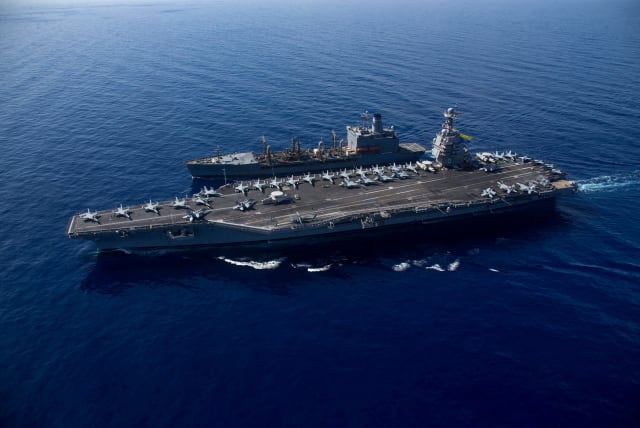US shifts one of two aircraft carriers away from Middle East

The Theodore Roosevelt carrier strike group has now departed the Middle East and is headed to the Asia-Pacific region.
One of two US aircraft carrier strike groups deployed to the Middle East in part to deter Iran from carrying out a threatened attack against Israel has departed the region, the Pentagon said on Thursday.
The decision to end the dual-carrier presence came nearly three weeks after US Defense Secretary Lloyd Austin ordered the Theodore Roosevelt carrier strike group to remain in the Middle East, even after the arrival of the Abraham Lincoln aircraft carrier strike group to replace it.
The Roosevelt has now departed the Middle East and is headed to the Asia-Pacific region, Major General Patrick Ryder, a Pentagon spokesperson, told a news briefing.
Austin's order for the Roosevelt to stay in place came on Aug. 25, as Hezbollah launched hundreds of rockets and drones at Israel, and Israel's military said it struck Lebanon with around 100 jets to thwart a larger attack in one of the biggest clashes in more than 10 months of border warfare.
Concern over Iranian retaliation
Officials have been concerned that Iran might also make good on its threats to carry out an attack against Israel over the killing of a Hamas leader in Tehran in July.
Ryder played down the idea that the United States was no longer concerned about potential Iranian action and said the decision was based on the Navy's fleet management.
"Iran has indicated that they want to retaliate against Israel. And so we're going to continue to take that threat very seriously," Ryder told reporters at the Pentagon.
Iran has vowed a severe response to the July killing of Hamas leader Ismail Haniyeh, which took place as he visited Tehran and which it blamed on Israel. Israel has neither confirmed nor denied its involvement.
US President Joe Biden's administration has been seeking to limit the fallout from the war in Gaza between Hamas and Israel, now approaching its one-year anniversary. The conflict has leveled huge swathes of Gaza, triggered border clashes between Israel and Lebanon's Iranian-backed Hezbollah movement, and drawn in Yemen's Houthis.
"We remain intensely focused on working with regional partners to de-escalate tensions and deterring a wider regional conflict," Ryder said.
Jerusalem Post Store
`; document.getElementById("linkPremium").innerHTML = cont; var divWithLink = document.getElementById("premium-link"); if (divWithLink !== null && divWithLink !== 'undefined') { divWithLink.style.border = "solid 1px #cb0f3e"; divWithLink.style.textAlign = "center"; divWithLink.style.marginBottom = "15px"; divWithLink.style.marginTop = "15px"; divWithLink.style.width = "100%"; divWithLink.style.backgroundColor = "#122952"; divWithLink.style.color = "#ffffff"; divWithLink.style.lineHeight = "1.5"; } } (function (v, i) { });

